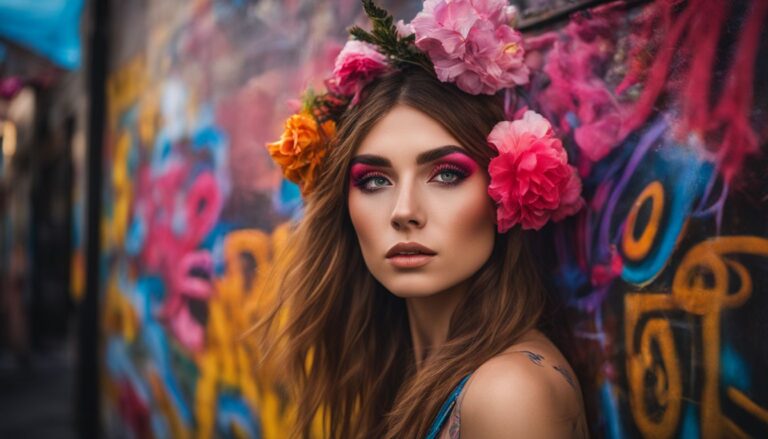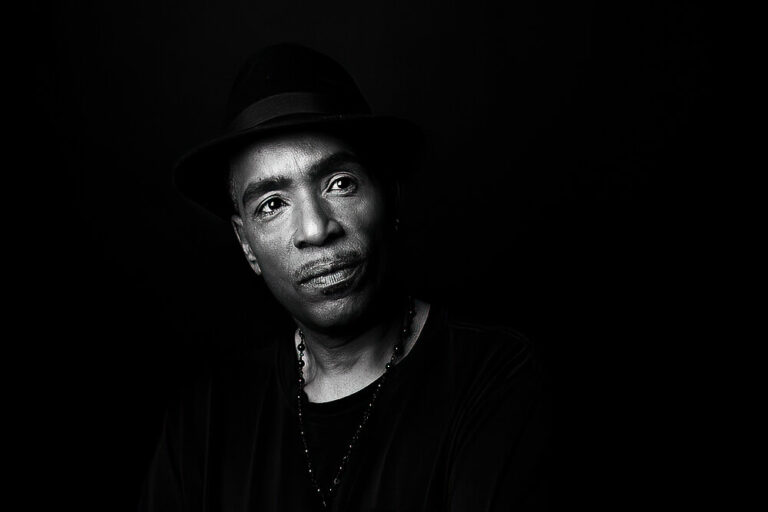The Heart Of The Image: Emotion In Portrait Photography
Capturing emotions in portrait photography can present quite a challenge. You endeavour to have your photographs not merely seen but felt, invoking a profound resonance with the viewer.
The quest is to immortalise more than just a mere smile or gaze; it’s about conveying stories untold through the silent language of expressions. This hurdle isn’t unfamiliar territory to many, myself included.
Intriguingly, our brains process images at speeds 60,000 times swifter than text, imbuing photographs with an instant and significant emotional impact.
This article distils my voyage of discovery into infusing genuine emotion within every snapshot I take. Merging extensive research with my personal experiences as Janel Kilnisan—a photographer based in Miami—I am eager to help you augment your portrait-photography“>portrait photography with sincere emotionality.
From crafting the quintessential ambience for your subjects to honing post-processing techniques that accentuate an image’s emotional depth, we shall explore practical advice and imaginative insights for capturing life’s subtly poignant moments.
Prepare yourself for a photographic journey brimming with heartfelt emotion.
Key Takeaways
- Capture true feelings by taking photos in places where people feel at home. This helps show real emotions.
- Use lighting and camera angles to create a particular mood in pictures. This can make viewers feel different emotions.
- Keep shots natural by not telling people too much about how to pose. Catch them off guard for more honest expressions.
- Please pay close attention to the eyes in your photos; they can tell a lot about what someone is feeling inside.
- After taking pictures, use computer programs to adjust colours and shapes. This will strengthen the feelings you want to share.
The Power of Emotions in Photography

How do emotions influence the impact of a photograph? Can a strong emotional response from viewers be captured in an image without words or context? Let’s explore the profound effects of emotions in photography and how they can honestly speak to us on a deeper level.
The ability to evoke strong emotional responses
We know the power of a photo to make you feel something profound inside. Our choice of lighting, point of view, and composition pull at your heartstrings. This isn’t just about taking pictures; it’s about freezing moments that stir many emotions.
A smile, a tear, or even a look can bring back memories or tell new stories.
Our work aims to translate feelings and experiences into images. We think about the emotions we want to share with you and let our highs and lows show through in our shots. Next, we explore how personal connections are crucial in capturing these raw emotions on camera.
The role of personal connection in capturing emotions
Moving from the sheer power of emotions, it becomes clear that a personal connection between the photographer and the subject is crucial in capturing those fleeting, genuine moments. This connection allows photographers to see past the surface and uncover the true essence of emotion.
Building trust and understanding with their subjects creates an environment where emotions can flourish.
A photograph is a secret about a secret. The more it tells you, the less you know. – Diane Arbus
We engage in conversations, share experiences, or simply spend time together before shooting. This process breaks down barriers and lets us capture emotion in its rawest form. Whether it’s joy bursting through a smile or sorrow shadowing over eyes, these connections turn photos into stories that speak to viewers on a deep level.
Techniques like focusing on eye contact or capturing unguarded expressions become much more manageable when mutual respect and rapport exist.
Our cameras are in our toolkit for evoking emotion without spoken words—a gateway to viewing life through different lenses. We rely on lighting to paint moods and shadows that stir feelings within viewers.
Every frame we choose carries weight; every angle tells part of a story meant to evoke contemplation or serenity in anyone who looks at our work.
Importance of storytelling and creating a mood
Building on the foundation of emotional connection, storytelling and setting an atmosphere play crucial roles in portrait-photography“>portrait photography. We strive to tell a story through our photographs, creating scenes that provoke thought and feeling.
A single photo can convey a narrative, transporting viewers to another time or place. This is where mood comes into play. It’s about choosing the proper lighting, shade, and composition to evoke specific sentiments within the viewer.
We craft these moods using tools like contrast, hue adjustments in Lightroom, and thoughtful framing. Every choice we make aims to enhance the emotional impact of the image. Whether it’s calmness at a golden hour or excitement captured through unexpected angles, each element works together to capture a mood that speaks volumes.
Our goal is always clear: create photos that capture moments and invoke feelings deep within those who view them.
Tips for Capturing Genuine Emotions in Portraits

How can we capture genuine emotions in portraits? What techniques should we use to bring out the true feelings of our subjects?
Capture subjects in familiar environments
Capturing subjects in places where they feel at home evokes genuine emotions, which is crucial for impactful photography. Our journey has shown us the powerful connection between familiar settings and the ability to express true feelings through images.
By taking photos of people in their everyday surroundings, we open a window into their world, making each photograph not just a visual but an emotional journey.
A camera does not just capture moments; it captures the essence of familiarity.
This method also allows photographers to let their own emotions guide the process. As we interact with our subjects in these known environments, our instincts lead us to capture fleeting moments filled with authentic expressions and feelings.
Next, we’ll explore keeping directions minimal and embracing candidness for more genuine portraits.
Give minimal direction and allow for candid moments
We find that giving little guidance lets our subjects’ real emotions and natural expressions shine. This approach creates portraits that are more authentic and touching. By stepping back, we can capture those unplanned moments that often tell a deeper story.
These genuine interactions evoke strong emotional reactions from viewers, making each photograph memorable.
Encouraging people just to be themselves in front of the camera is critical. It allows us to seize their true essence without forced smiles or poses. This technique is potent as it reveals different emotions that are uniquely individual to each subject.
Through this method, we create images that look beautiful and carry great emotion and meaning for anyone who sees them.
Use the element of surprise
We often use the element of surprise to capture genuine emotions. This approach lets us see real, raw feelings on camera. We find that unexpected moments bring out authentic responses in our subjects.
This method adds depth and complexity to the emotions shown in their portraits.
Surprise leads to natural reactions from people we photograph. It helps us catch their true essence without them putting up a guard. Adding unexpected elements to our photos creates intrigue and engages viewers on a deeper emotional level.
This technique proves powerful in evoking strong responses from subjects and those looking at the image later.
Focus on the eyes
After surprising our subjects, we turn our focus to the eyes. They say eyes are windows to the soul for a good reason. In portrait photography, capturing the eyes with clarity can evoke deep emotions and tell a story without words.
Our aim is always to allow viewers to feel a connection through the images we capture.
The eye tells what the heart feels but cannot say.
We zoom in close, ensuring each glance speaks volumes about how someone feels. By adjusting our camera’s focal point sharply on their gaze, we let true feelings shine. This approach helps us create photographs that look beautiful, carry emotional weight, and connect deeply with those who see them.
Zoom in on details
We must zoom in on the most minor details to capture authentic emotions. Focusing on subtle gestures and expressions allows us to uncover the true essence of a subject’s emotions. By capturing the fine lines etched on a person’s face or the delicate curve of their hand, we can evoke robust emotional responses from our viewers.
Using macro photography lenses helps us magnify intricate details, bringing attention to otherwise unnoticed aspects. It enables us to highlight skin texture, revealing a depth that resonates with viewers emotionally.
Observing these minute details and translating them into visual storytelling enhances the overall impact of our photographs.
Techniques for Eliciting Emotion Without People

How can we evoke emotions in photography without using people as subjects? Can landscapes, street settings, and inanimate objects bring feelings to life through the lens of a camera?
Landscapes, street settings, and inanimate objects
Landscapes, street settings, and inanimate objects play crucial roles in photography. They can evoke powerful emotions and captivate viewers without the presence of people. Body language or hand gestures within these scenes can add depth to the storytelling and create an emotional connection with the audience.
Experimenting with different depths of field and lighting techniques allows photographers to elicit specific emotional responses from their viewers, bringing life to otherwise still subjects.
The power of capturing landscapes, street settings, and inanimate objects lies within their ability to provoke an emotional response. Whether it’s the grandeur of a mountain range or the nostalgia evoked by an old building, these subjects can stir up emotions ranging from awe and inspiration to melancholy and introspection.
Use of body language and hand gestures
When photographing subjects, the position of their bodies and the gestures they make can powerfully convey emotions. Leaning forward or crossing arms can express different feelings, while hand gestures can add depth to a portrait.
These elements help elicit genuine emotions that resonate with viewers.
Aligning body language and hand gestures with the desired emotion enriches a portrait’s narrative. For instance, open palms might signify honesty or vulnerability, while clenched fists could evoke determination or strength.
Experimenting with depth of field and lighting
Experimenting with depth of field and lighting is crucial in photography. It allows us to evoke specific emotions and create impactful visual narratives. By adjusting the depth of field, we can choose what elements to emphasise in a photograph, directing the viewer’s attention towards the subject while creating a sense of dimensionality.
Different lighting techniques enable us to set the mood and atmosphere, influencing how emotions are perceived within an image. These tools significantly convey feelings such as intimacy, mystery, or nostalgia.
As we experiment with these concepts, it’s essential to remember that entities from photography, like aperture settings and natural light, greatly impact the emotional tone of our images.
The Importance of Post-Processing in Eliciting Emotion
Post-processing plays a crucial role in evoking emotions from your audience. Enhancing the colour, contrast, and framing can magnify the impact of your photographs and create a specific emotional response.
Interested in learning more?
Enhancing colour and contrast
Enhancing colour and contrast in photography greatly influences how viewers respond emotionally. Vibrant, contrasting hues can evoke a wide range of feelings and intensify an image’s overall impact.
It’s essential to consider the emotions you aim to convey when adjusting these elements during post-processing, as they play a crucial role in creating a specific emotional response in the viewer.
Enhancing colour and contrast can guide the viewer’s gaze towards focal points and create a dynamic visual experience that resonates emotionally.
The choice of enhancing colour and contrast significantly impacts the emotional response of individuals viewing portrait photographs. Colours have psychological associations, so by carefully manipulating them, we can elicit specific emotional reactions from our audience.
Creative use of framing and composition
Creative framing and composition are pivotal in infusing emotion into portrait photography. Experimenting with different perspectives, angles, and focal points can completely transform the mood of a photograph, creating a dynamic narrative that resonates deeply with viewers.
Our personal experiences have shown that employing techniques such as incorporating leading lines or utilising the rule of thirds adds visual interest and guides the viewer’s eye to evoke specific emotional responses from the image.
It is essential to understand how these compositional elements work harmoniously to convey feelings and elicit strong emotional reactions from those who view our photographs.
In addition, street photography provides an excellent platform for exploring creative framing and composition. By strategically framing subjects within their environments and capturing authentic moments through unique perspectives, we’ve found it possible to tell compelling stories laden with raw emotions.
Editing to create a specific emotional response
After carefully composing the shot and utilising creative framing and composition, editing plays a crucial role in evoking specific emotional responses from the viewer. We can enhance the image’s mood to convey an intended emotion through post-processing techniques, such as adjusting colour saturation and contrast.
Furthermore, we leverage selective focus or blur effects to direct attention towards critical elements within the photograph, amplifying its emotional impact.
In addition to technical adjustments, employing tools like Photoshop and Lightroom allows us to fine-tune aspects like lighting and shadows to invoke feelings of warmth or mystery.
Through meticulous editing tailored towards our desired emotional outcome, we can create a visual narrative that speaks directly to the hearts of our audience.
Conclusion
Emotions play a crucial role in photography, evoking robust responses from viewers and creating personal connections. Capturing genuine emotions requires minimal direction and a focus on the eyes.
Even in non-human subjects, emotions can be elicited using body language, lighting, and depth of field techniques. Post-processing is also essential for enhancing colour and composition to create specific emotional responses.
By applying these tips and techniques, photographers can effectively convey the heart of their images with impactful emotion.
Capture genuine emotions by allowing candid moments rather than giving extensive directions.
Zoom in on details such as eyes to evoke strong emotional responses from viewers.
Experiment with different techniques to elicit feelings without relying solely on human subjects.
Enhance photographs using post-processing tools like colour correction and creative framing.
Craft compelling images that resonate with viewers through storytelling elements and visual mood creation.
FAQs
Q: What is portrait photography?
A: Portrait photography is the art of capturing the essence, personality, and emotion of a person or group of people in a photograph.
Q: How can a photographer evoke emotion in portrait photography?
A: In portrait photography, a photographer can evoke emotion through composition, lighting, posing, and creating a connection with the subject.
Q: What are some photography tips for capturing emotions in portraits?
A: Some photography tips for capturing emotions in portraits include focusing on the subject’s eyes, using natural light, and creating a comfortable and relaxed environment.
Q: How important is framing in portrait photography?
A: Framing is crucial in portrait photography as it helps to draw focus to the subject, create depth, and enhance the photo’s overall composition.
Q: How do photos make viewers feel emotions?
A: Photos make viewers feel emotions by eliciting a response based on the visual cues, composition, lighting, and subject matter captured in the image.
Q: What role does strong composition play in portrait photography?
A: Strong composition in portrait photography helps to create visually appealing images, guide the viewer’s eye, and convey the intended emotion or message.
Q: Why is capturing emotions in portrait photography important?
A: Capturing emotions in portrait photography adds depth, storytelling, and a sense of connection to the photographs, making them more impactful and memorable.








